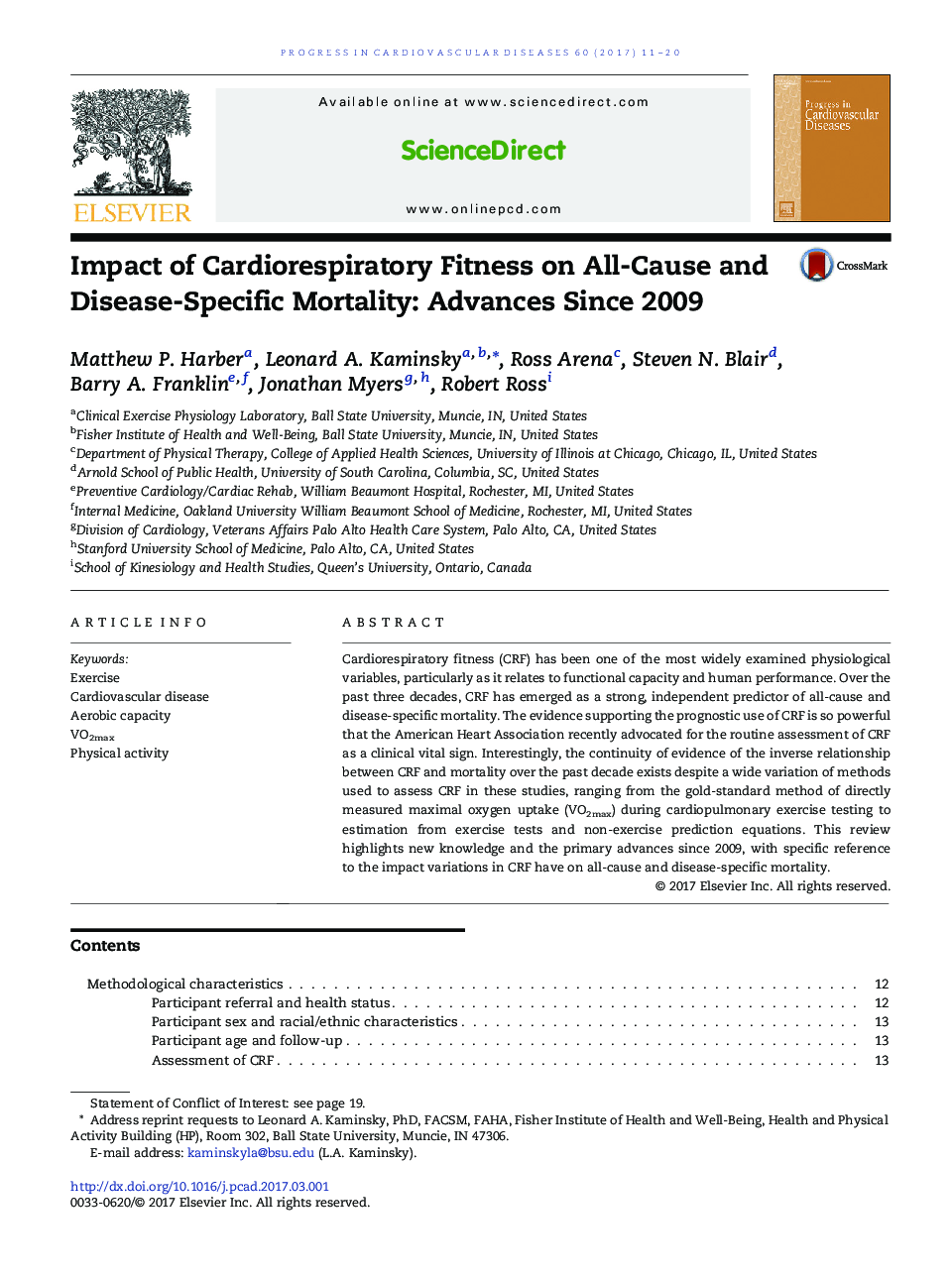| Article ID | Journal | Published Year | Pages | File Type |
|---|---|---|---|---|
| 5619514 | Progress in Cardiovascular Diseases | 2017 | 10 Pages |
Cardiorespiratory fitness (CRF) has been one of the most widely examined physiological variables, particularly as it relates to functional capacity and human performance. Over the past three decades, CRF has emerged as a strong, independent predictor of all-cause and disease-specific mortality. The evidence supporting the prognostic use of CRF is so powerful that the American Heart Association recently advocated for the routine assessment of CRF as a clinical vital sign. Interestingly, the continuity of evidence of the inverse relationship between CRF and mortality over the past decade exists despite a wide variation of methods used to assess CRF in these studies, ranging from the gold-standard method of directly measured maximal oxygen uptake (VO2max) during cardiopulmonary exercise testing to estimation from exercise tests and non-exercise prediction equations. This review highlights new knowledge and the primary advances since 2009, with specific reference to the impact variations in CRF have on all-cause and disease-specific mortality.
